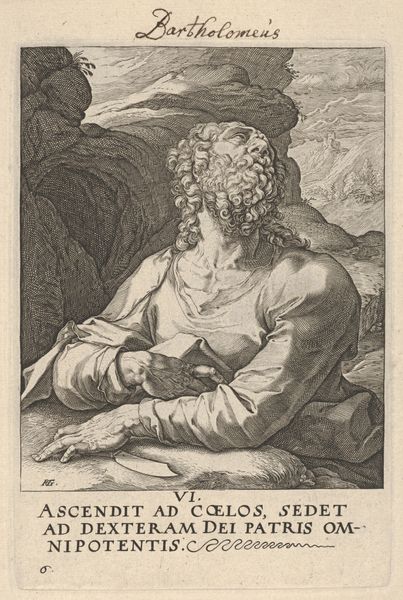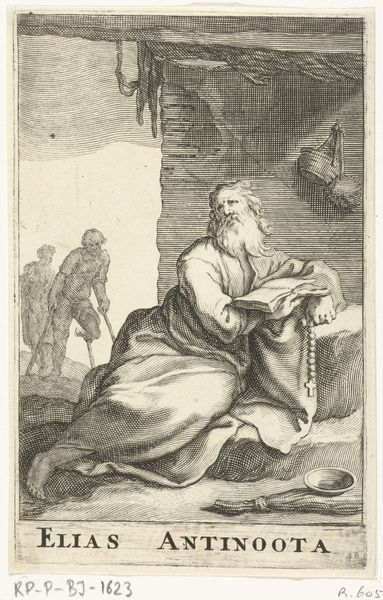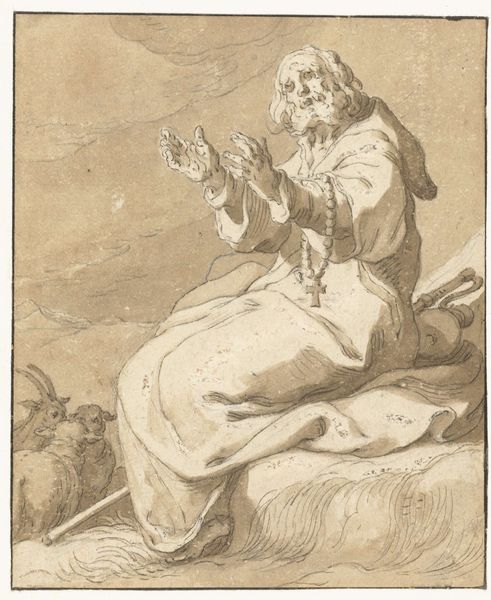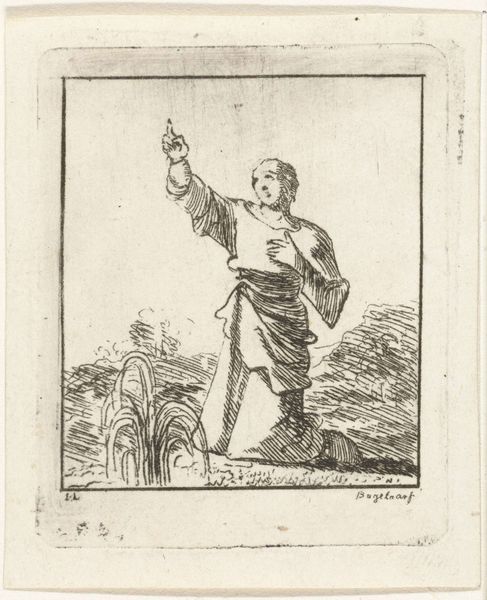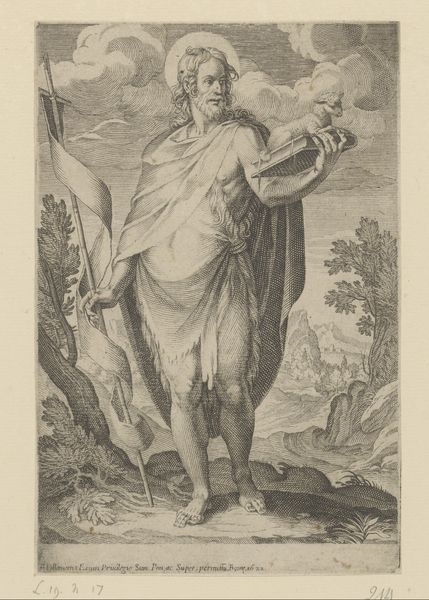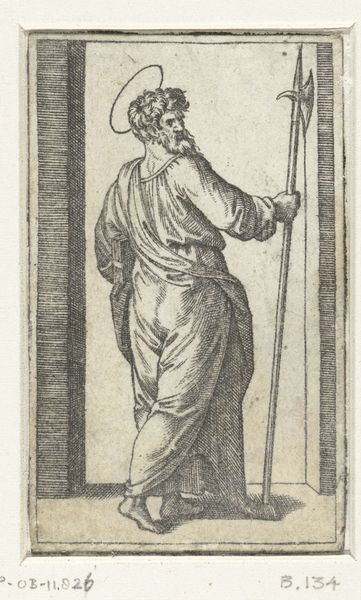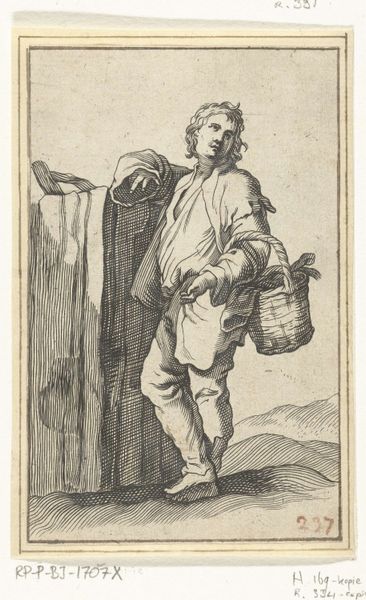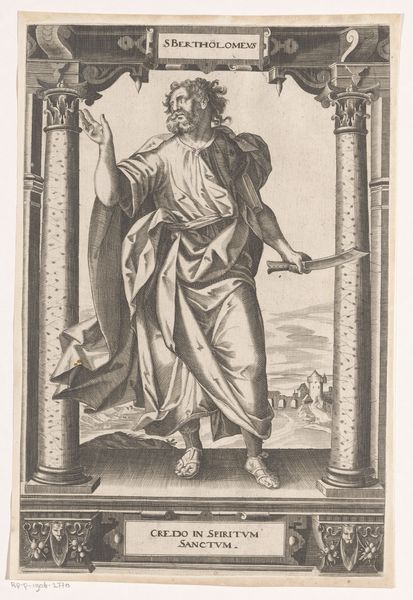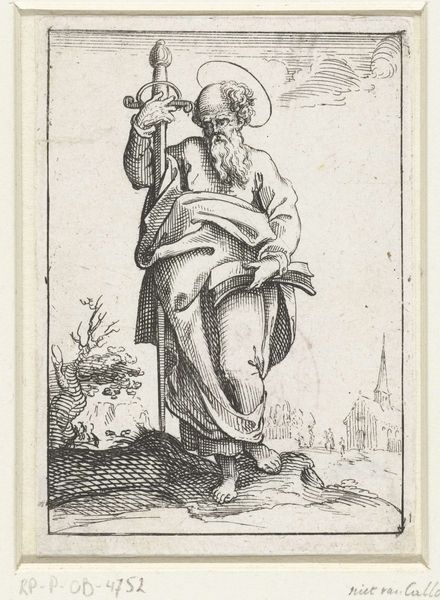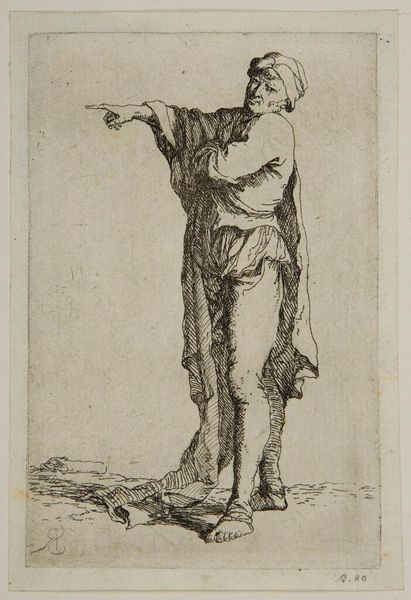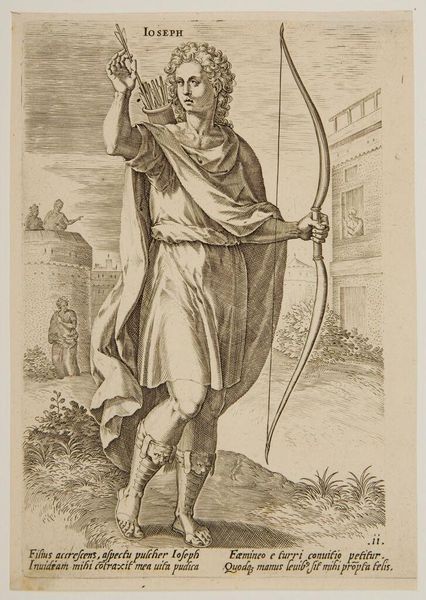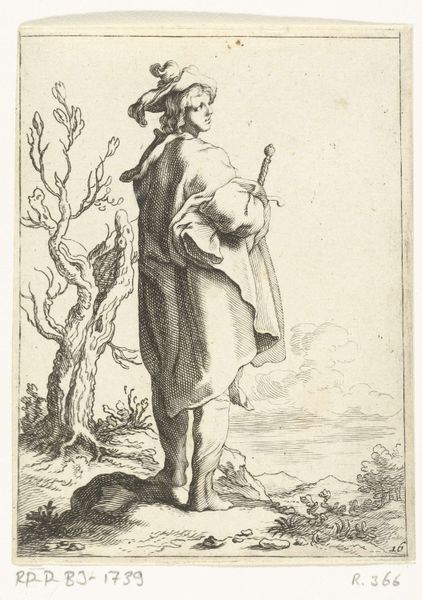
engraving
#
portrait
#
baroque
#
pen illustration
#
engraving
Dimensions: height 135 mm, width 85 mm
Copyright: Rijks Museum: Open Domain
Curator: Here we have "Heilige Serapion de Sindoniet", an engraving made after 1636 by Frederick Bloemaert, currently residing in the Rijksmuseum. Editor: My first impression is one of stark austerity. The figure seems burdened, though there is an upward, almost ecstatic expression. The fine lines really emphasize that contrast. Curator: Indeed. The work’s power lies in its contrasts, doesn't it? Bloemaert has skillfully employed a baroque style to depict Serapion. Notice the textures and shading—the artist’s handling of line suggests depth and volume using minimal tonal variation. Editor: And the symbolism! We see the cross leaning against the rock, and the open book. Those evoke Serapion's unwavering faith, and perhaps hints at scripture and sacrifice? There's an intriguing vulnerability to him. His open palms seem to suggest a surrender. Curator: Yes, and note the way Bloemaert uses the composition to reinforce this reading. Serapion is seated above those elements, elevated physically above the symbols of his belief but through Bloemaert's deliberate rendering, he does not exist separately. Editor: And what about Serapion as a symbolic figure? Sindon refers to the burial shroud; linking this saint with themes of death, and perhaps resurrection. I can't help but also think about the burdens we all carry, projected onto this single individual. Curator: You touch upon an excellent point. Despite the historical context, the figure, defined so deliberately by his physical form, also echoes human struggles and the burdens of faith through purely visual terms, lines and texture. It's fascinating how Bloemaert utilizes an economy of means to express a deeply emotional narrative. Editor: For me, it underscores the weight of belief, mirrored in that stark and deliberately emphasized engraved line. A figure embodying complex cultural meanings for centuries of viewers. Curator: Yes, it's a study in form and faith intertwined—the artist uses careful mark-making to underscore timeless qualities that go well beyond the Baroque style itself.
Comments
No comments
Be the first to comment and join the conversation on the ultimate creative platform.
